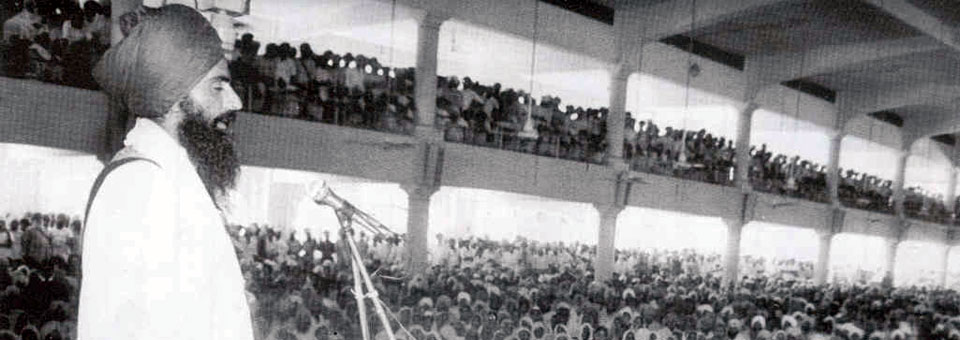Whenever I’m asked about my patterned turbans, I usually spit some waffle in an inaudible manner which leaves the questioner regretting that they ever asked. It’s not something that I had expected to be an issue – the colour and style of my turban is my choice, surely? But sadly, being judged and interrogated for my colourful and patterned turbans is something that I face quite regularly. And what’s worse is that it’s mostly fellow Sikhs who bring it up.
I received my first patterned turban from an English friend named Joe about five years ago who told me that he had brought it back for me from his trip to South Asia. It was an incredibly tricky fabric to tame, but once I managed to don it correctly, it felt like I had finally found home. But this wasn’t my first experience of tying something ‘different’. Before patterned turbans arrived in my life, during a trip to my local Gurdwara in Hounslow, I was told by a Giani that I was wearing the wrong colour. I was left shocked and confused trying to understand what the ‘wrong colours’ were. I questioned him further and he let slip that he thought wearing a green turban was ‘bad’ because it was the colour of Pakistan. As I left and headed outside I saw a tree and laughed to myself, imagining the Giani painting it black like the Rolling Stones classic!
During some self study on local Sikh history, I came across a range of images of Sikhs mass-migrating all over the globe during the first half of the Twentieth Century and I was gob-smacked at the patterned to plain turban ratio. One of my favourite images portrays the Sikhs and other Punjabis who were turned away from Canada on the Komagata Maru. It was refreshing to learn that even during one of the longest journeys and toughest times, there was at least one fellow Sikh with a patterned turban in the crowd.
It’s interesting to note that Sikhs have on occasion used the colour of our turbans to tell the World how we feel in unison. Following the Nankana Sahib tragedy in the 1920’s Sikhs wore black as a sign of protest; and as recently as 2012, Sikhs worldwide wore orange turbans to protest the detention of Balwant Singh Rajoana as part of the #iPledgeOrange movement. The bravery of sticking out like a sore thumb during the days of intense racial and religious tension seems extremely valiant to me. And this is something that Britain has experienced before, when in the heyday of far-right political parties, Sikhs were thug-life-ing with some of the brightest, most colourful turbans imaginable.
So the question I often ask myself when I attend Sikh functions and see the sea of darkness is: are we protesting something? Perhaps we’re attempting to conform as much as possible to western ideals of ‘suitable’ colours and what Sikh turban style should be? I realise that patterned turbans aren’t for everyone, but let’s maximise our creativity and stop putting barriers up for those of us who want to rock something different. Celebrate the turban in all it’s styles, colours and patterns, for that is the glory that it represents.






